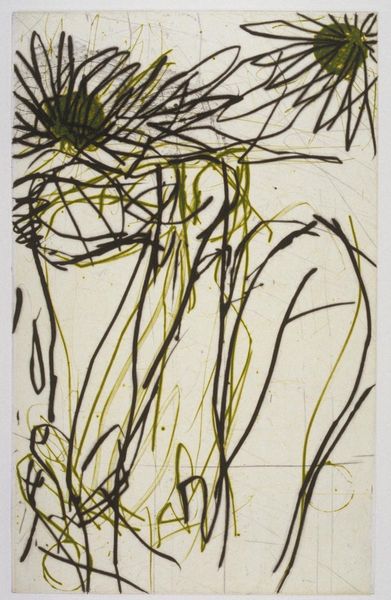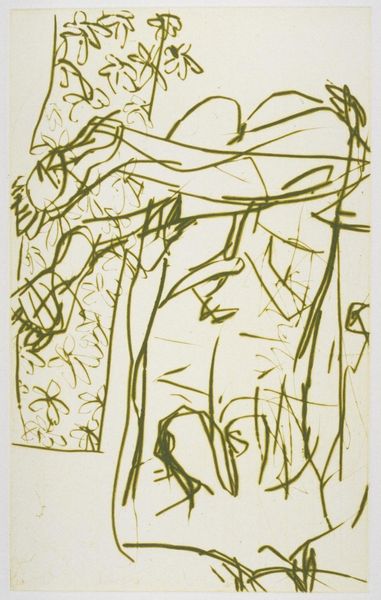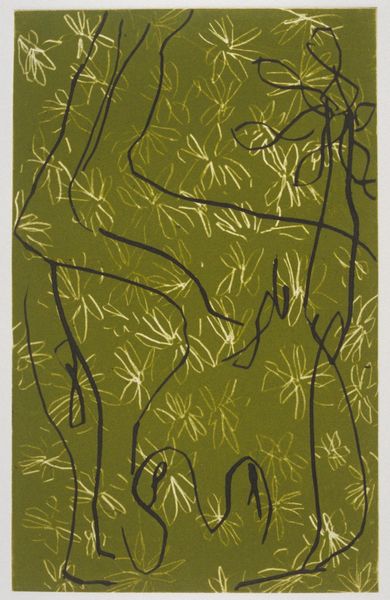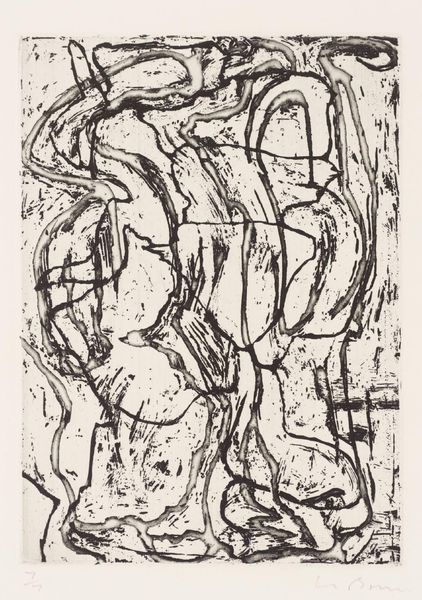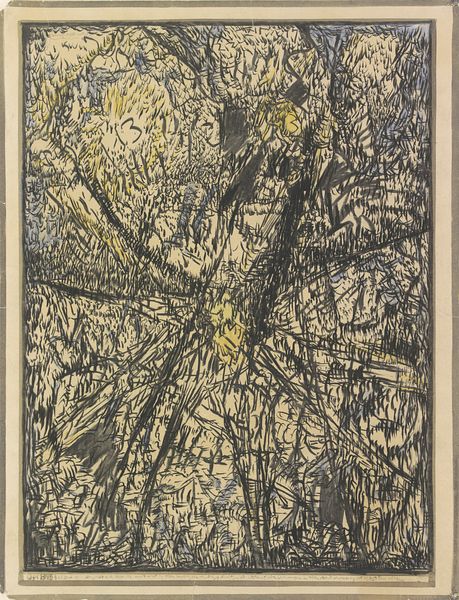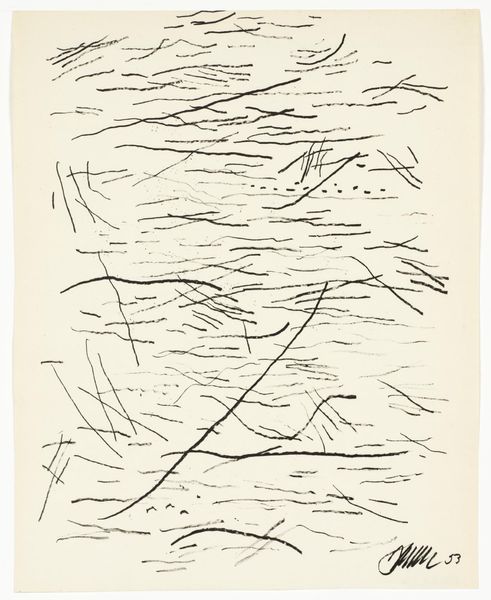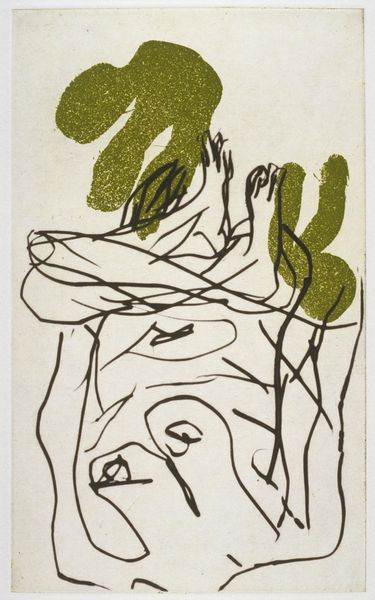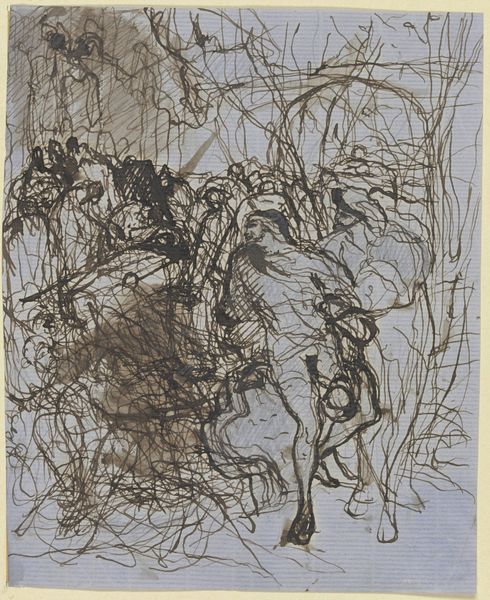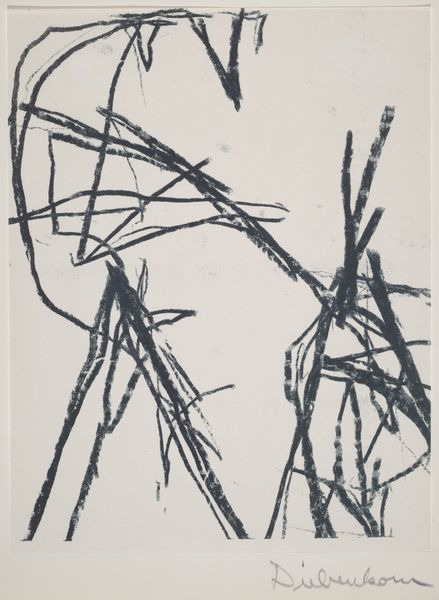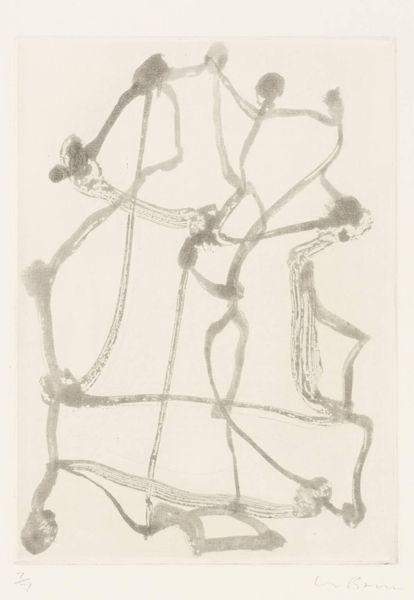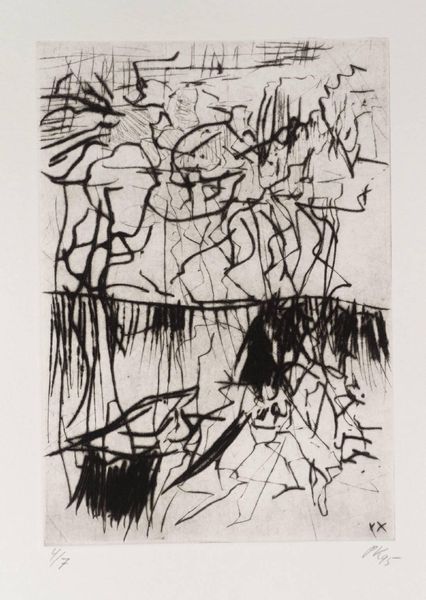![[no title] by Georg Baselitz](/_next/image?url=https%3A%2F%2Fd2w8kbdekdi1gv.cloudfront.net%2FeyJidWNrZXQiOiAiYXJ0ZXJhLWltYWdlcy1idWNrZXQiLCAia2V5IjogImFydHdvcmtzL2EwMDc3MjczLTgzODAtNDJkMy04MWVhLTRhMTc1N2Y2NzhlYy9hMDA3NzI3My04MzgwLTQyZDMtODFlYS00YTE3NTdmNjc4ZWNfZnVsbC5qcGciLCAiZWRpdHMiOiB7InJlc2l6ZSI6IHsid2lkdGgiOiAxOTIwLCAiaGVpZ2h0IjogMTkyMCwgImZpdCI6ICJpbnNpZGUifX19&w=2048&q=75)
Dimensions: image: 293 x 180 mm mount: 561 x 409 x 4 mm
Copyright: © Georg Baselitz | CC-BY-NC-ND 4.0 DEED, Photo: Tate
Curator: This print by Georg Baselitz, held in the Tate Collections, immediately throws me off balance, almost like a visual vertigo. Editor: Yes! It’s unsettling, isn’t it? The layering creates a kind of visual noise. I see the recurring floral motif, almost like wallpaper gone wild, and then the dark, heavy lines attempting to define a human figure struggling to emerge. The image feels like a memory fragment. Curator: I agree. The figure, though abstracted, seems to be reaching out or perhaps falling. Baselitz often explores themes of disruption and fragmentation, challenging conventional perceptions. These disjointed symbols are not just aesthetic choices, but a reflection of his historical context in postwar Germany. Editor: It's a bold visual statement, an exercise in deconstruction. The flowers, perhaps symbols of life, are almost suffocating the figure. The entire image suggests a tension between beauty and chaos, nature and the human condition. Curator: Precisely. Baselitz prompts us to question what we see, to delve deeper into the meanings behind the chaos. Editor: Absolutely, it's a potent image that resonates long after you’ve turned away. The visual tension continues to churn within me.
Comments
Join the conversation
Join millions of artists and users on Artera today and experience the ultimate creative platform.
tate 7 months ago
⋮
Baselitz’s vigorous and expressive style, influenced by the drawing and paintings of the mentally ill, often represents the body as a site of anxiety. This series of prints show a female figure crouching and twisted. The body is fragmented: in some works, the head is cropped, while others feature only isolated limbs. The hatched and scored quality adds to the sense of raw spontaneity and even violence. Many of the prints include flowers and vegetation which, with the use of greens and browns, suggest wild nature and fertility. Gallery label, July 2015
